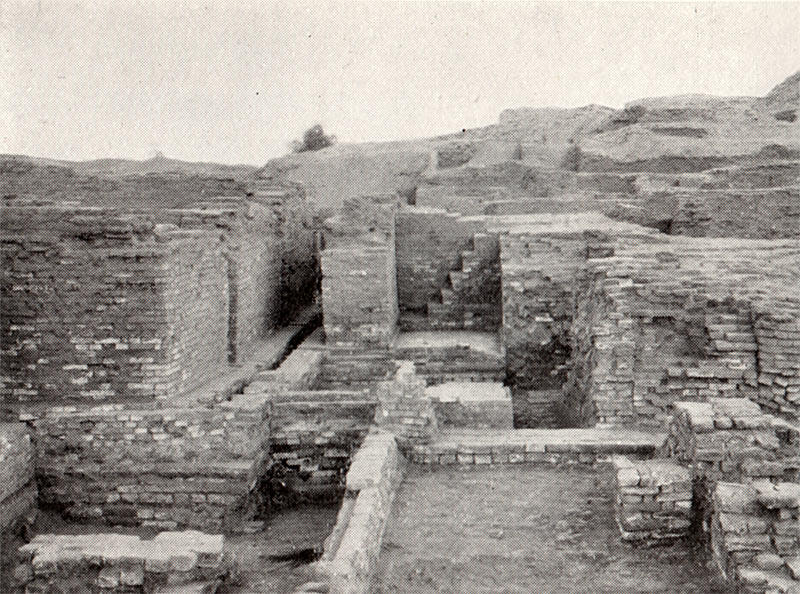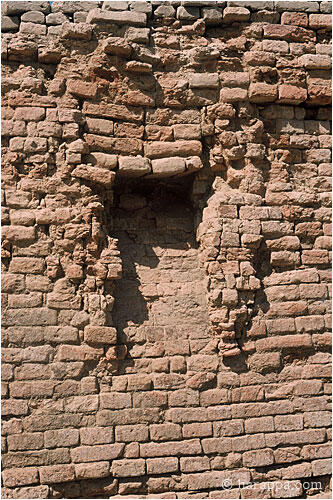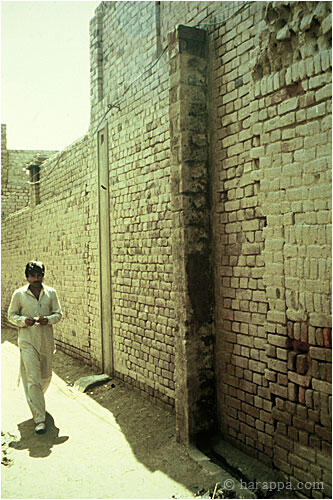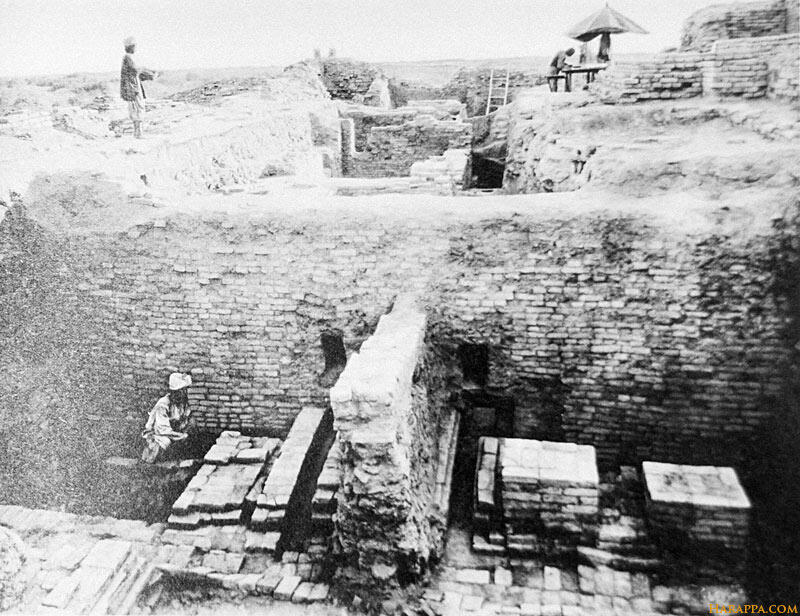May 28th, 2016
"The bathroom itself was usually a small square or rectangular room with a carefully-laid brick pavement sloping towards one corner. In this corner was the outlet for the water, which, in some cases also ran through the latrine. The walls surrounding the bath pavement were invariably wainscotted with bricks laid on edge so as to stand about three inches above the level of the floor (P. B, a [above]). The slope of the pavement and the close-setting of the bricks of which it was made provided against the infiltration of water, but, as a further precaution, the pavement was sometimes laid on a thick bed of pottery debris....
In some cases the brick floors of the bathrooms had been polished by the friction of bare feet, while in others they show a deep red deposit, which may have been caused by perspiration or by the use of oil to prevent the skin from cracking–a custom prevalent in India at the present day. Some bathrooms contained the remains of water jars, and, to judge from the number of pottery models that have been found in the drains, it would seem that the childish habit of taking play-things into the bath has persisted for thousands of years. Certain clay objects found from time to time are thought to be strigils with which the people of Mohenjo-daro used to rub themselves down; it is certain that they used pottery rasps to removed thickened cuticle." (Ernest Mackay, The Indus Civilization, 1935, pp.41-44)
A strigil is defined by Wikipedia as "an instrument with a curved blade used, especially by ancient Greeks and Romans, to scrape sweat and dirt from the skin in a hot-air bath or after exercise; a scraper." https://en.wikipedia.org/wiki/Strigil
1. Building with small bathrooms, north of Great bath, showing passages and drain, from W., Mohenjo-daro. Plate B (a).
2. Northern end of cutting on east side of Stupa, showing the Indus structures from north. Many of the buildings at Mohenjo-daro had two or more stories. Water from the roof and upper storey bathrooms was carried through enclosed terracotta pipes or open chutes that emptied out onto the street, such as this one on a house in DK-G Area.
3. Modern Second Storey Drain at Harappa Town. In the modern town of Harappa, a covered drain built along the outside of a house takes sewage water from a second storey latrine and bathroom to the street level drain without splashing people passing by on the street.
4. Northern end of cutting on east side of Stupa, showing the Indus structures from north. [Original 1931 text] "Of the drains which served this building and which belonged to the later reconstruction, one (EE) is carried east and west along the inner side of its northern wall through Chambers 10 and 11 and so beneath the monastery shrine (3); a second (FF) empties itself from the bathroom 67 into the street drain (HH) on the north; and a third (GG) running south to north through Room 68 also discharges into the street drain HH a few feet further west [above]." (Marshall, Vol. I, pp. 125-126), image from https://www.harappa.com/slideshows/marshalls-mohenjo-daro-1922-27








